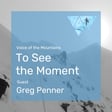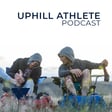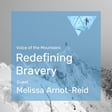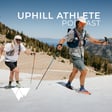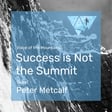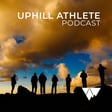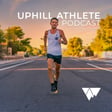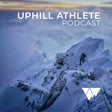Become a Creator today!Start creating today - Share your story with the world!
Start for free
00:00:00
00:00:01

Talking Strength Training for Bipedal Mountain Sports
In this episode coaches Alison and Sam Naney discuss the proper application of supplemental strength training and how athletes may go about determining the types of strength training that will benefit them most as individuals.
Transcript
Introduction to Uphill Athlete Podcast
00:00:01
Speaker
Welcome to the Uphill Athlete Podcast. These programs are just one of several free services we provide to disseminate information about training for mountain sports. If you like what you hear and want more, please check out our website, uphillathlete.com, where you'll find many articles and our extensive video library on all aspects of training for and accomplishing a variety of mountain goals. You'll also find our forum, where you can ask questions of our experts and the community at large.
00:00:30
Speaker
Our email is coach at uphillathlete.com, and we'd love to hear from you.
Meet the Coaches: Allison and Sam Naney
00:00:37
Speaker
Hi, everybody. I'm Allison Naney. I'm a coach at Uphill Athlete. And I'm Sam Naney, also a coach at Uphill Athlete. Now that that's taken care of. We're here, sitting in our living room with our children asleep. Maybe.
00:00:56
Speaker
So we're going to talk about strength today.
Understanding Strength in Coaching
00:00:58
Speaker
And I, we talk about all kinds of training things all the time, but strength is one that comes back around quite a bit. Just, I think a lot because of our differences in strength. Um, and I thought it might be interesting for athletes and listeners to, um, kind of get the.
00:01:20
Speaker
get the idea of what we think about from a coaching standpoint when we're talking about strengths. And then if there's time, I mean, we're using strength as the example, but really it can be brought into all kinds of different physiological training effects that we're going for. So with strength, what do you think about? What do you consider strengths, Sam?
00:01:51
Speaker
Strength can occupy a lot of different realms. When you think about athletes, I think the most common concept that people think about with strength is
00:02:05
Speaker
pure muscular power, really. So someone's ability to move an amount of weight over a distance quickly and effectively. So being able to deadlift x number of pounds, or bench press, or to jump from the floor onto a tall box is what we think about as strength. But really, what I try to think about as strength more fundamentally is
00:02:35
Speaker
the way a given muscle or group of muscles can move most effectively through their entire range of motion. So that's not necessarily the beefcake beach bod that is lifting big barbells for show as you know that there is strength involved there but it could just as equally be the ultra lean
00:03:00
Speaker
mountain runner who doesn't necessarily have this big bulky muscular physique, but can move really efficiently and quickly over huge rugged, you know, high elevation terrain. So that's strength
Contextualizing Strength for Training Goals
00:03:17
Speaker
as well. It's just how effective can your muscles do the work that you ask of them in the most efficient way possible of moving through that range of motion.
00:03:25
Speaker
Yeah. And I think we'll get into this a little bit later, but it really has to have context of what it is that you're wanting to do. So strength is all good and well to deadlift 500 pounds, but if you can't run, well, if you're a runner and you have a hard time running.
00:03:49
Speaker
more than a mile and you're wanting to do an ultra, then that strength isn't doing you that much good. So how to transfer the strength that you have into the goal that you're wanting to do. And I think of it a little bit from the opposite standpoint, because I'm a Prius with not much power that I think like, okay, well, I, I need to actually gain more strength. Um,
00:04:19
Speaker
Whereas some people might need to focus more on the other parts of being more economical or just getting more efficient with what they're doing. So movement efficiency and movement strength as well, you know, it takes strength to run fast around a track, but we don't always think about that as strength.
00:04:42
Speaker
just by and large. Yeah, I think specificity is once again the key. That word permeates
00:04:52
Speaker
so much about training and for good reason. And Scott and I talk about speed in a recent podcast and it's the same principle and speed is a component of strength in that if you, just like you said, if you can't run one mile fast, how do you expect to run 13.1 miles or 26.2 miles fast?
00:05:20
Speaker
So you have to develop this specificity. It's not if your intent is to be an ultra runner or to be a ski mountaineer.
00:05:29
Speaker
then lifting weights in a gym has benefit, but we often think of that as very general strength or even more tongue in cheek dumb strength. It gets the muscles prepared in a certain way. It develops a certain form of the strength that they need, but in order to get them from that point, that foundational point of strength to the ultimate specificity that you're asking of them when they run up a mountain or
00:05:59
Speaker
do a ski mountaineering objective.
Coaching Balance: Weaknesses and Strengths
00:06:01
Speaker
There's several steps in between to sort of hone the edge of that strength and make them prepared for it. That's the specificity angle. Yeah, and I think more broadly, from a coaching standpoint, it's always a little bit tricky to thread that needle of training your weaknesses and
00:06:25
Speaker
And then hopefully racing your strengths. So finding finding that edge of where you can have an athlete get the most benefit from kind of working on the things that they don't have, but then.
00:06:38
Speaker
also being able to capitalize on the strengths that they do have. Which are very difficult things to do in practice. Coaching it is certainly more straightforward because it's easy to be objective. I think it's a lot more difficult to do that when it's your own self that you're trying to identify your strengths and weaknesses and then consciously
00:07:04
Speaker
trend toward the weaknesses and not be inclined to just train the things that you're good at. I love strength and I feel like I have natural tendencies toward sort of that, what I was mentioning, like kind of the dumb strength. Like I can, you know, I like doing it in the gym and lifting a lot. It feels really good, but there's a certain point at which it doesn't really, it doesn't really make me a better runner. There are a lot, there are a lot more things that I could do that would be effective.
00:07:34
Speaker
Totally. And I'm on the other end of that. No. Pretty much. And the workout I don't do is, uh, some form of strength. So then I think the other question is, and again, we can get in a little bit more, uh, structured way to talk about this, but, um, how to get the, how to get the training effect that we're after. So there are lots of different ways to get what we're going for. And so the.
00:08:05
Speaker
you know, deciding, okay, well, should we go for what you're going to get the maximum benefit from, which might be doing something that you don't like doing as much, or do we just kind of ease into it, doing the things that you like to do, knowing that you might not get quite as much of a benefit, but the likelihood that you'll actually do it and look forward to doing it week after week is higher. So then maybe you choose that route. Um,
00:08:33
Speaker
So what, do you have anybody in mind that, or that you can think of as, as an example? Like when we, when we first have somebody who comes to coaching and, um, let's say they want to run an ultra, um, what are the types of things that you think about in terms of where strength is going to play a role? How do you decide that? Um,
Functional Movement and Strength Foundations
00:09:00
Speaker
Yeah, I think the starting point, usually in terms of working with an athlete, is getting that training history and figuring out what are the things, if anything, that they do for strength. And it's kind of a mixed bag. I think what we categorized earlier rings pretty true for a lot of people. You're either someone who is
00:09:22
Speaker
predisposed to doing strength training. You enjoy it, your body, and we all know we have these different inclinations. For some people, going into a gym and lifting weights or doing those sorts of movements feels really good, and for others, it's just pulling teeth. If you don't want to go into the gym, it doesn't feel very good. You'd much rather just go for a run every single day.
00:09:44
Speaker
get some of that information first and figure out where on that spectrum somebody lies. And then from there, I usually think about functional movement first. And again, I think by my definitions of strength, that very much is strength, not necessarily how much weight can you move in a deadlift type of motion.
00:10:10
Speaker
Um, but can you actually go through that range of motion without getting stuck somewhere, you know, without your heels having to, you know, come off the ground or you're, you know, something, some sort of hitch occurring. Um, so that's really important. Okay. Squats fine. All right. So can you do a, can you do a squat without having to put like a five pound plate under each foot? Uh, that's, that's a, that's a better example.
00:10:39
Speaker
Um, so if, if you can't, if you can't drop into a good back squat position with your back straight, um, and, and heels flat on the floor without, uh, having to, you know, and be able to do that deep enough, uh, without having to prop your heels up in order to get in that proper position, then that, that can tell us a lot, uh, that there's, there's a flexibility issue, which is a, in my mind, a form of strength. The muscles aren't able to go through that range.
00:11:08
Speaker
So sort of identifying some of those things first and thinking about what's the lowest hanging fruit that we can tackle before looking to that sort of ultimate, oh, let's tackle muscular endurance. How fast can you run up that hill with this amount of weight or something like that? Because that's far down the road for most of us.
00:11:30
Speaker
We use pretty much most people I'd say if not everyone has these imbalances that really can be best tended to with the more foundational type of work and they'll be far better served by that for a while at least before getting into the more specific and often sexier forms of what we'd consider strength training.
00:11:52
Speaker
Yeah, totally. And I think that's also, that's part of why I think this is an important topic because you see other people doing certain workouts and like, Oh, that looks great. I want to do that. But then you, if you can't do those basic exercises, which while they're not necessarily specific in terms of, you know, hopefully you're never going to be.
00:12:17
Speaker
doing a back squat type movement in a 50K. Unless you're working in a station. Maybe. But if you can't do that movement safely, or just in a way that doesn't have some sort of kink in it,
00:12:38
Speaker
you're going to get hurt and you're going to be out for who knows how long you're, if you get some sort of injury. Um, and once you put on load, like, then you really don't want to be loading up because then you're, you're going to make that even worse. So having these, um, when I think about it from a massage therapy standpoint as well, like you want to have mobility first and have good range of motion and then start loading. You don't want to load things first because
00:13:08
Speaker
that will cause problems. And I think, so to your question earlier about, what do you think about with athletes? They all often give people, and it doesn't really matter the, what,
00:13:25
Speaker
the perceived or expressed level of strength and fitness the athlete presents when I get started with him, I'll usually put folks through a pretty foundational strength workout that has a few exercises in it that I think serve really well as indicators. One of them that I think both of us use quite a lot with folks is the star touch or the compass touch. Basically, you stand on one leg and
00:13:51
Speaker
and then you bend forward and you touch all four points of the compass. So you touch- Squat down. Or squat down, yeah. So you're squatting down and you're touching the front, you're touching behind, you're touching out to each side.
00:14:07
Speaker
That often gives a lot of information. For some people, they do it and it's just like, it's a breeze. But for a lot of folks, they do that and they find that it's really difficult to balance or they can do the one in front just fine. But then when they try to squat down and reach behind the foot, they get really off balance or from one side to another, they just can't keep their footing and it's really challenging.
00:14:32
Speaker
Those are great opportunities to identify things that you could work on that could pay huge dividends for something like trail running where coordination and having good foot stability is paramount. Again, far better than doing a strength exercise where both feet are planted on the ground.
00:14:56
Speaker
and you're lifting a big weight because how often, as you say, are you in the middle of the trail race and both feet are planted at the same time? Springing across a raging river.
Progression in Strength Training
00:15:07
Speaker
Right. Small stream.
00:15:09
Speaker
But then on the other hand, when you want to just build top end, like, well, I shouldn't say top end because it's not as specific, but if you just want to build your max strength, doing those types of movements is actually much better than doing balancing type stuff. So that's still where having these foundational
00:15:30
Speaker
movements down so that you can load them so that you can increase your strength ceiling can be really beneficial. So it all kind of feeds on itself and I think it's one of the reasons that strength is just such an important piece to consider no matter what it is that you're doing and kind of like we talked about a lot. It's like just knowing the goal that you're after and everything
00:15:57
Speaker
Everything has some purpose and knowing what that purpose is and how that's gonna be improving for the goal that you need. So if you have enough time, maybe you spend a chunk of time working on max strength. The strongest I've ever been was when I did some max strength and then I started doing
00:16:16
Speaker
running intervals up hills and things like that, because I knew that that was my limiter. And, um, but for someone like you, who is, you can lift way higher than what the sports that you do require, you get more benefit from actually running flats, which you hate doing.
00:16:38
Speaker
Yeah. And I think that it's an interesting question. How should everybody go through a strength progression that leads them through max strength? So basically, doing several sets of only a few repetitions of a given movement or movements at the maximum load that you can sustain.
00:17:02
Speaker
Like, is that rhetorical question, like, you know, where is the value for that? So we know that, you know, there's a benefit to that in that you're seeking to recruit the highest number of components of a given muscle or muscle group to do that work. And so there are more of them that are basically trained neuromuscularly for that movement. And then, you know, hopefully you can extrapolate those trained, you know, that training into something that's more support specific.
00:17:31
Speaker
Yeah, on the one hand, between you and me, I can, you know, between you and I, you and me, you and I, I can lift more weight.
00:17:46
Speaker
just a little bit. Just a little bit, a few pounds. But I also know that when I, you know, so on one hand, like, well, yeah, I don't need to do that very often because there's much more opportunity in
00:18:03
Speaker
developing my running economy on flat terrain, which is so boring for me to do. I'd rather run on trails. But at the same time, I know when I go and lift for, you know, do a few weeks of max strength,
00:18:19
Speaker
everything moves so much better. I can tend to, if I just go and just start running and just run it all, I'm just like, yeah, my limiter is being able to run efficiently and that's what I need to do more of. If I just do that, I start getting tight in place. My range of motion isn't as good.
00:18:43
Speaker
I'm sure part of that is that my running technique can always be improved. But I also know that if I balance that trying to build running volume with going into the gym once a week or even once every 10 days or so and doing some lifting where I'm really working that range of motion, I feel so much better. Like everything just gets opened up a bit and it seems to create more space. My muscles are more, you know, they're able to work in that range better. And it almost seems like in that sense,
00:19:13
Speaker
For me, it really is a neuromuscular advantage than it is, you know, a pure strength in the sense of maximal strength. Yeah, for sure. And I think that's the other piece, like every, there are more than one, there's more than one benefit for each of these things. So strength has the benefit of increasing your max strength capacity. It also has.
00:19:38
Speaker
a benefit of recruiting more muscle fibers. It also has the benefit of, um, being kind of a source of recovery as well. Um, and it can, um, the right types of strength. Right. And it can make you also just have, be a little more resilient to injury. So if you're maybe, if you are a little bit
00:20:03
Speaker
inefficient with running or whatever the case may be, having a little bit more strength will help you just give you a little bit more of a buffer. I think of it a little bit like aerobic base training. It's like having a certain base of strength gives you
00:20:23
Speaker
more of a range just in terms of that whole strength spectrum. So let's pretend that we have, well, so I wrote down in my little notes, I kind of think of strength as a continuum
00:20:41
Speaker
of those foundational movements that we talked about. I'm not going to call them dumb strengths because it's... That's a pejorative. It's smart strength. It's good. Baseline strength. And then on the other end of that spectrum would be doing the activity. So there are some PTs who favor
00:21:03
Speaker
just getting the movement patterning and neuromuscular patterning, but not loading the muscles at all and just doing the movement over and over and over. So basically running to build strength for running. Yeah. Yeah. Specificity through specificity. Right. Which has been kind of the common refrain for climbing is like you get strong for climbing by climbing. Um, but we know that you can build more strength, um, by
00:21:31
Speaker
Putting in additional load and practicing some of it I think can just be practicing the movements in a higher load environment And localizing it and so focusing on yeah, so kind of going from local to global in terms of muscle group
00:21:46
Speaker
Yeah, exactly. And so in that in between is where most people fall like, okay, well, how do I know how much strength to do? Should I do gym strength? Should I do muscular endurance? Should I just run? And I think about a few different things.
Choosing the Right Strength Training
00:22:03
Speaker
And this kind of, again, goes, could be more broadly to everything, but what's the, what's the end goal? So if we're talking about a race, what kind of race is that? What type of terrain, what kind of strength do you need? If it's a flat race, you're going to need a different kind of strength than a vertical race or a sky running race. Um, and as you mentioned, what's the athlete's background? Um,
00:22:32
Speaker
Do they have more of an endurance background? Do they have more of a power background? And then what motivates the athlete? So we touched on this earlier, but I am much more likely to be compliant doing pill workouts than doing a gym strength. You don't say it.
00:22:54
Speaker
Um, I have clients who are the same and from a coaching standpoint, I have to take a little of my own medicine and still get into the gym sometime because I do know like you will get higher benefit from some of those things where like you're saying you are localizing it instead of having to also have the aerobic cost and the other, um, the different things to mitigate. You can just focus on the strength component, which can be a big benefit.
00:23:24
Speaker
And you can take, I mean, I remember, you know, and we do this, I think maybe it was our friend Pete Dickinson, PT, who mentioned this to me. First, you know, this idea that you can couple the two components. So you go into the gym and you do a strength workout of some type and some flavor.
00:23:47
Speaker
depending on where you're at in your progression, but then you follow that strength workout up with a short recovery effort, ideally in the modality that you're training. And I think that's a really clever way to approach it because you go into the gym and you lift your weights, you do these particular movements that are part of your strength regimen, but then afterward you go out and you do an easy 30-minute run.
00:24:13
Speaker
or a 30-minute skin, a pill or spin on the bike, whatever it is. With the idea of being, again, if we come back to this idea of strength is often this neuromuscular training. It's making your muscles more, making them smarter for the activity they need to do, more in tune with it.
00:24:36
Speaker
if you go out and run afterward, you've basically got all these freshly primed muscles that have done some work and now you're gonna tell them, okay, now that you're all ready, you're all lined up and waiting for orders, now go and run. This is what we do. This is how you utilize your new powers to the thing that I want you to be good at. And I think that's a really good way to blend that local and global, or local and non-specific, specific components at the same time.
00:25:04
Speaker
Yeah, for sure. And that a lot of, and you can do it as an activation, the strength workout can be kind of an activation type workout, even before a workout, depending on the person and what their background is.
00:25:17
Speaker
I think the one trick, and obviously this is where the individualization comes in, like that can also be pretty taxing. For some people, you know, a gym workout is pretty tiring. And then at the end of that, they're kind of shot. So you also want to make sure that, well, if it's somebody who has, tends to have good form and in this case, running doesn't,
00:25:44
Speaker
take too much out of them, then great. But for somebody who, you know, if you get somewhat tired doing a strength workout, it might actually be better to do your run at another time so that you're not then going to have poor form when you're running so that you're not
00:26:02
Speaker
reinforcing bad habits. Well, and that is kind of an example of that that I know you've done a lot, which I think can be really beneficial is I know you would have, you'd be getting ready for a run and you'd have people do strict, really proper sit-ups.
00:26:22
Speaker
So engaging their core, their deep transverse and core stability muscles, they do 10 sit-ups and then they get up and they start running. And maybe sometimes you have them run for a minute or two first, and then you have them do this, and then you have them run again.
00:26:39
Speaker
And the difference in how people feel, and I've done this and can definitely notice how much more engaged your core is at holding your frame well when you're running after you've essentially woken up those muscles. So that's, yeah, I guess to your point, that's an activation exercise that isn't going to get anybody tired. It's not going to leave them running more, less effectively.
00:27:05
Speaker
but it's actually going to do the opposite. It's going to waken up these muscles that need to be working, but maybe weren't so inclined to do it if you hadn't spoken to them directly. Yeah, exactly.
Core Strength and Movement Efficiency
00:27:17
Speaker
The same can be said for glute type activation bridges and even just dynamic warmups, just doing a little bit of leg swings and all of that. It's all just the neuromuscular component. It can be really helpful. Yeah, it's not just simple blood flow. Right.
00:27:35
Speaker
So got a little in the weeds there, but what's a podcast without a little weeds getting, um, so how do you decide, how do you decide what strength to do? So let's say we have somebody who is, um, training for the grand traverse ski race at the end of March.
00:28:05
Speaker
40 miles starts at midnight. Nothing terribly technical.
00:28:18
Speaker
Go. Yeah, well, okay. So that's, yeah, nothing terribly technical. For the distance of the race, there's not a lot of vertical gains. 77,000, 7,500 feet, something like that. My name is Kelly, and I'm training for the Grand Traverse. And I, let's see.
00:28:45
Speaker
I do a lot of field work for my job, where I carry a pack, and I'm on my feet most of the day. But then outside of work, I'm pretty tired, so I don't get a lot of other stuff in. But on the weekends, I go out and ski tour.
00:29:03
Speaker
Okay. Yeah. So what would I think about? I would want to, I'd want to get an idea of what your core strength is like. You know, on one hand, maybe it's really good because you're carrying a pack, you're walking around all day. So, you know, maybe you've, you've built your frame up to be able to hold that weight and be stable.
00:29:25
Speaker
injury free but on the other hand maybe you have really bad posture when you carry your pack so doing you know some some simple core exercises to ascertain where you're at there
00:29:39
Speaker
I think if we're thinking specifically about something like the Grand Traverse, it's not necessarily true that strength from something like ski touring will transfer because, again, the Grand Traverse is more about skinning in varying forms across flat and rolling terrain. There's only a couple of what we consider ski tour-esque climbs in that race.
00:30:08
Speaker
It's not necessarily going to be the same as ascending a steeper skin track or breaking trail in the mountains. Thinking about, are you efficient with your movements? Again, that's a form of strength. Can you have perhaps a higher cadence or stand on the ski a little bit longer and get a little glide out of it?
00:30:30
Speaker
In your example, Kelly, I would be thinking about specificity first. I'd be thinking about core strength and then I'd be thinking about specificity of movement. If you're ski touring and you're not necessarily complaining about, I can barely do 3,000 feet a day and I'm exhausted. If you're able to be competently doing that, I think the
00:30:52
Speaker
The focus would be, all right, let's get your, uh, general fitness that you've built over your days of field work and, and skinning, skiing in the mountains. Uh, let's get that fitness trained toward the specificity of something like the grand traverse, maybe even for, you know, an opportunity where you might be using really lightweight race type gear. So you're going to, you're not going to have as much weight on your feet, but you're going to be moving quickly and striding longer, et cetera, et cetera.
00:31:22
Speaker
Okay. That sounds good. I'll do that. Great. Let's get started.
00:31:30
Speaker
Okay, so I'll give you one. Okay, so I am Jean Philippe, and I am a very avid CrossFit enthusiast.
Transitioning from CrossFit to Running
00:31:46
Speaker
I have a gym session, a group session that I like to do with a bunch of friends a couple days a week.
00:31:54
Speaker
I've been doing it for years, feels great. I get tired from it, but I can do all the exercises and the workouts. And I'm planning on running my first 50K this summer. I ran a road marathon last year, and it went pretty well. I had some ankle issues through the training, but I made it through. And I started doing some trail running. Really enjoy it.
00:32:19
Speaker
uh and yeah i'm really psyched to to get started and run my first 50k and and oh and i i i don't train with heart rate i just kind of go by fuel this is tricky because strength very quickly like just gets melt like it's one component so um do the best you can um so i would want to know what his
00:32:48
Speaker
pacing is at different efforts, and I would want to know what his heart rate is, so that's not entirely strength-focused.
00:33:03
Speaker
speculating, uh, he probably does not need to gain more strength. He probably has plenty of strength for whatever 50K he wants to do. So the lowest hanging fruit is going to be
00:33:19
Speaker
probably postural and injury treatment type stuff, especially if he has ankle issues, and probably a lot of the stabilizer type muscles. CrossFit is great for the global movements.
00:33:35
Speaker
It also is throwing weight around a lot, sometimes at higher velocity than they actually should be. And so I'd want to do an assessment of just kind of primary movements and single leg movements where it's probably a little bit less, you know, actually body weight stuff, maybe a little bit more flexibility minded. I've had people where,
00:34:03
Speaker
They're super strong, but then I asked them to do a single leg bridge and they're sweating because it's so hard. I know what that's like. A single leg bridge. Or sideline leg leg. Yeah. That is quite important to have the glutes and the glute need and all those stabilizing hip muscles to be on board. A lot of those stabilizing muscles,
00:34:29
Speaker
probably need in some of the smaller um you know even the the ones in the spine um so core and all of that would probably be really beneficial and then beyond that just running economy doing a lot of running most CrossFit
00:34:47
Speaker
workout routines don't do more than like a hundred meters at a time or maybe a half mile, but that's going as hard as you can. I had somebody come to my running retreat once where they hated running and they didn't like yoga, but they came with some friends and I was like, Hey, this is a yoga retreat. Great. You're going to have a blast. And we went out on our run and, uh,
00:35:15
Speaker
we were going really easy. And she's like, man, this is so much easier than what I do at CrossFit. I'm like, well, yeah, at CrossFit, you're like running.
00:35:24
Speaker
until you puke every time. If you just slow down a little bit, it can be a lot more enjoyable. So just, you know, some of that efficiency and economy of movement is probably going to be way more beneficial for that type of athlete than doing more deadlifts or even muscular endurance. Most CrossFit is muscular endurance or a lot of it is. So finding
00:35:51
Speaker
I think what's tricky, and this goes both ways, if you are strength-minded and you really like strength, then you're going to feel like, well, I can't back off of doing strength because I need to be strong. And if you're an endurance person and run all the time, mostly under aerobic threshold,
00:36:17
Speaker
Uh, you are not going to want to give up one of your days of running to go do a gym workout when, cause then you think, well, I can't let go of that aerobic capacity. So trying to figure out where that balance point is. And I think that's where.
00:36:34
Speaker
figuring out where that motivation for the, for the athlete is, um, and the opportunity cost because there's only so many workouts you can do in a week. And so if you want to continue doing CrossFit, great, but just know that then that's probably a workout or two that then can't be the super specific running specific strength that might give you better gains. Yeah. And I think, I mean, yeah. And not to,
00:37:00
Speaker
not at all to pick specifically on CrossFit because I think it is an example of a lot of different ways in which particularly
00:37:10
Speaker
that strength occurs in people's lives. Oftentimes it's in a group setting, it's at a gym, and it's a lot easier. And we've done this when we coach in groups and at camps. It's a lot easier and it's more fun to have a strength workout be higher energy and have stations and you're moving from station to station and there's kind of a pace to it.
00:37:35
Speaker
and you're sweating your eyeballs out? Well, right, yeah. And I think there are many, many people, probably a good majority of people that do group classes like CrossFit, like many others, who aren't getting totally gutted at the end of it. It's a sustainable effort. But I think to your point, it's important to acknowledge what are
00:38:04
Speaker
What is, what is the, what is that workout drawing out of you, and and what is it, what is it not contributing. So if you're doing a workout that has strength components but also has a an aerobic intensity component you know your heart rate is up. Its recovery is limited.
00:38:23
Speaker
then that needs to somehow be accounted for elsewhere in the week where you do tend to, where you do need to focus on, you know, predominantly aerobic intensity and really creating the movement in a sustainable way. Because if all your strength has been done in that higher intensity environment, then there's other components of your strength that aren't being tended to. Yeah, I think like you say,
00:38:47
Speaker
Just knowing the training effects that you're after and different ways that you can get that is the whole art of it, I guess. I guess we've sort of gone through the takeaways, if any.
00:39:06
Speaker
If you're wanting to figure out what kind of what, where does strength fit into your diet into your regimen of training.
Injury Prevention and Strength Training
00:39:13
Speaker
One thing we, we've sort of, we talked about it throughout, sort of, as a component piece but not explicitly as injury prevention, and how
00:39:23
Speaker
I think strength, one of the primary rules of strength for endurance athletes and athletes who are bipedal or you're running or you're skiing or cycling or what have you is to prevent injury. Because, yeah, as we've said, at a certain point, the top layer of your strength is going to come from doing the thing.
00:39:49
Speaker
having injury resilience by the foundational strength is really important.
00:39:58
Speaker
So I guess that doesn't, we've kind of gone over the pieces in which you could do that, but it's good to note that it's not necessarily about just being able to run faster or ski faster, but it's also just to be able to do enough volume to get faster. You need to have that resilience and that good functional range of motion of a given joint and the muscles surrounding it.
00:40:23
Speaker
and that's really critical to being able to absorb the loads that you're going to ask of your body. Yeah, I think that's one of the main, so if we maybe think of strength as a pyramid, so you have the foundational movements and core strength at the bottom and that's
00:40:40
Speaker
I think the injury prevention is kind of a primary reason to have strength. And postural control, especially most of us sit a lot of the day, and that is terrible for our posture and it affects how we move every other part of our life.
00:41:03
Speaker
It makes it very hard to get hip extension and hip extension is extremely important for most activities. Um, yeah. And holding ourselves upright. Like it's just, it's just really detrimental to that. So most of the time, like people sit more than your training. Very few athletes are training.
00:41:27
Speaker
Yeah, I think maybe COVID has changed this a little bit, but, you know, also think about, yeah, this isn't tangent, but think about other things that you could do outside of sitting so that maybe you don't need to have as much mobility and strength work to compensate for sitting a lot. But that foundational strength that helps with posture, helps with movement, it helps with injury prevention.
00:41:58
Speaker
And then beyond that, then there's the strength that kind of supports the specific that can be that stabilizer stuff, just kind of maintenance that can be really helpful. And that's where max strength can also fall into being a maintenance piece. And then beyond that,
00:42:20
Speaker
you get a little bit more specific and maybe you're doing things like hill sprints or hiking uphill with weight or where you're still not getting an aerobic component to it. It's a quick enough either a short enough interval that you're not getting a heart rate response or it's
00:42:39
Speaker
um enough of a muscular load if you're hucking a pack up a hill where you're still um just going at an aerobic pace but you're feeling it in your legs that's another strength component um and then the kind of that tip of the pyramid is then you know your zone three intervals and extending those and that requires quite a bit of strength
00:43:06
Speaker
And you could, you know, this is where I was going back to again, of like figuring out what motivates that athlete. Like some people are much more likely to actually complete the uphill intervals, but you're really not gonna build much strength if you don't have those other things before it.
00:43:29
Speaker
Yeah, yeah, no, and I think that's I think that motivation piece is is really crucial because there is
00:43:37
Speaker
Yeah, so it's easy to come up against the obstacle of, well, I don't want to go back into the gym or, you know, I'm much more content to do it out on the hill and build my muscular endurance in a more global way. And again, it's just, I think this is, and this is a piece that we talk about throughout all the training, just understanding the work that you're doing and what it's contributing to.
Balancing Motivation with Training Gaps
00:43:58
Speaker
So if
00:43:59
Speaker
If you are seeking to build muscular endurance, then doing uphill intervals can be a great way to do that. But know that that's also a global effect. It has a high anaerobic and in some cases anaerobic component to it. So it's going to be more taxing for your body. So figuring out how to balance that load.
00:44:19
Speaker
Another piece with strength that we haven't talked about much and we'll talk about in later podcasts again is speed. So training speed from the various sort of fundamental end, which is how quickly can a muscle fire? What's that neuromuscular connectivity? How quickly can the brain send a signal to a muscle and have it respond is absolutely strength. And so starting from,
00:44:48
Speaker
jumping up onto, you know, jumping across a stick to jumping up onto a box to sprinting 50 meters to, you know, extending that, uh, you know, identifying, you know, where in your, you know, leading toward your given objective, how much, how much room do you, can you gain by doing some speed training? And that's something that can be done in a specific manner, obviously, because that, you know,
00:45:12
Speaker
The muscles need to be done, you know, need to be doing that work in the way that they're intending to do so in your, in your objective. Um, but yeah, I think that's, I think the way you summarize Alison is really good is thinking about what, what's going to be most motivating for you as an athlete to do on a consistent basis. And then in thinking about that also recognizing, okay, if I'm most motivated,
00:45:39
Speaker
speak for myself, like I'm most motivated to go out and run up steep hills. And that's great. I can get muscular endurance from that. But what am I not doing? And for me, the stuff that I'm not doing that you so lovingly tell me.
00:45:56
Speaker
Identify. It's like, I don't do the single leg bridges and I don't do the sideline leg lift and the stuff to take care of those stabilizing supportive muscles that are at sometimes kind of hanging on for dear life as I thrash on them on our long hard workouts outside. So, identify on your weaknesses. Know thyself. Know yourself. Yeah, exactly. Because I think that's also a piece of it.
00:46:25
Speaker
I, for whatever reason, don't really need to do that stuff. I don't get those types of injuries, but I need to build strength actually in the gym so that I actually have some power to go uphill.
00:46:43
Speaker
knowing the components of strength that you're lacking and knowing what your strengths are too. And then I think that makes it easier to maybe sacrifice one day to be like, oh, I know that this is gonna really help me in this part that I get annoyed when I can't go up this hill faster. And so I'm willing to do the thing that I'm not quite as excited about because of that.
00:47:11
Speaker
So what you're really saying is when it comes to strength, it depends. Of course. Yeah. Yeah. All right. So no, yeah, the athlete knows himself. Then or herself or yeah, then women can be athletes too. And then they can, yeah, then they're able to take that information and figure out the best way to move forward. Yeah. All right. Sounds good. And then speed. When you guys.
00:47:41
Speaker
I mean, speed is so, it's kind of hard not to talk about speed because there is such a straight strength component, but I think yours and Scott's podcast will be great for that. But it made me think of it when you, when you mentioned the track, like I put that in for runners who really just want to be out in the mountains all day, but, and you think, Oh, well, why is that? That is so not specific, but.
00:48:05
Speaker
This fall I did a series of track workouts and I'd come back and my core was like sore and more sore than it was when I just go do a core workout because it's so specific. And it can help clean up your form, which is the form of strength. And there's just all kinds of benefits from speed. They're very intricately linked. Speed is huge. And I think it is something
00:48:34
Speaker
I'd say more so than the strength training we've been talking about, lifting weights and doing things like that. I think speed training at the most foundational level is even more ignored by
00:48:50
Speaker
endurance and particularly ultra endurance athletes. And it's understandable is if you're running a hundred miler and your average pace is going to be in the 13 to 15 minute mile range, then why on earth are you going to go and spend a lot of time on a track running
00:49:07
Speaker
six minute miles or sprinting in four minute mile for 50 meters. But yeah, there's so many different benefits that come from that. And I think form is a really important one. It's difficult to build really good form when you're moving slow.
00:49:33
Speaker
The muscles aren't firing as dynamically. You're not lengthening in those ranges of motion as well. And the same sort of thing with recruitment. You just don't need to recruit as many muscle fibers. Right. Which is fine. Which is great. That's kind of the point. But then a lot of them just kind of jump out of the pool because they figure they're not needed. And then you have a small pool. And so if you're trying to go fast, you actually have to engage more muscle fibers and bring them off the bench.
00:50:01
Speaker
TBD. T-B-A. T-B-C. T-B-A. T-B-A. To be continued. T-B-C. Yeah. We'll talk about it. We'll talk about it. Yeah. Awesome. All right. Until then. Great. Well, thanks, everyone. Have a good evening or morning or afternoon or whatever you're having, and get out there and do some strength training. Bye.
00:50:25
Speaker
Thanks for joining us today. For more information about what we do, please go to our website uphillathlete.com.







